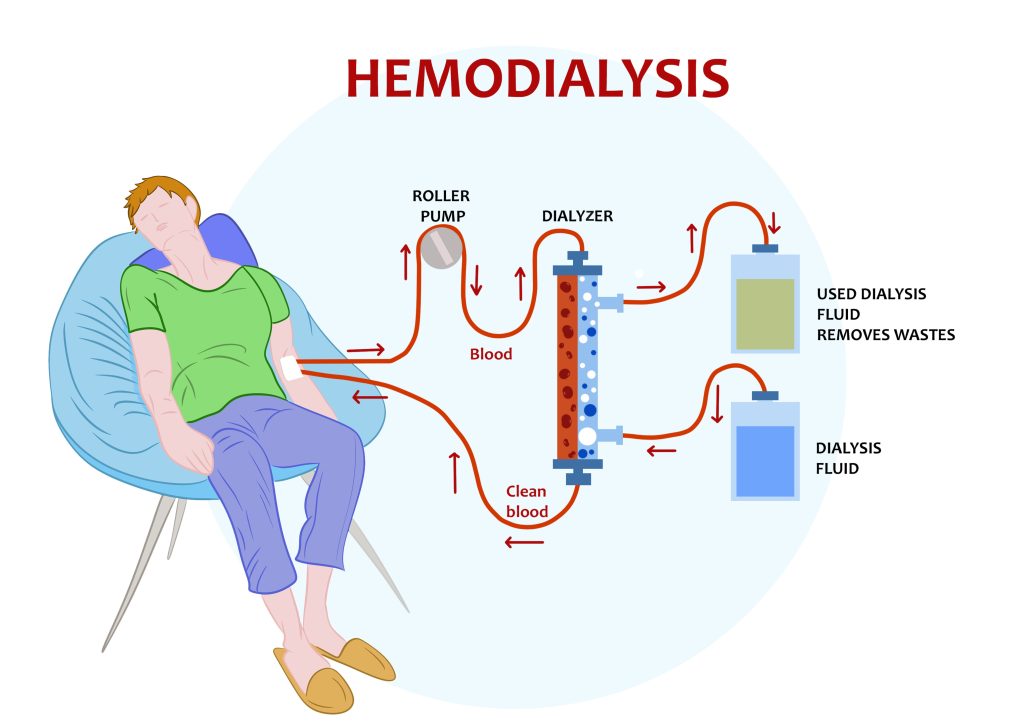
This image illustrates the process of hemodialysis, a medical procedure used to remove waste products and excess fluids from the blood when the kidneys are no longer able to perform these functions effectively.
Process
Blood Flow:
Blood is drawn from the patient’s body and passes through a series of tubes into the dialysis machine. A roller pump helps to regulate and maintain the flow of blood through the system.
Dialyzer:
The core component of the dialysis machine, known as the dialyzer or artificial kidney, contains a semi-permeable membrane. As blood flows through the dialyzer, waste products and excess fluids pass through the membrane into the dialysis fluid (dialysate), while essential components like blood cells and proteins remain in the bloodstream.
Dialysis Fluid (Dialysate):
Fresh dialysis fluid is continuously supplied to the dialyzer to help remove waste products from the blood. The fluid contains a solution of purified water, electrolytes, and salts that help draw out waste and excess fluids from the blood.
Used Dialysis Fluid:
The used dialysis fluid, now containing the waste products and excess fluids removed from the blood, exits the dialyzer and is disposed of.
Clean Blood:
The cleaned blood, free from waste products and excess fluids, is then returned to the patient’s body through another set of tubes.
Hemodialysis typically requires multiple sessions each week, with each session lasting several hours. This treatment is essential for patients with severe kidney failure to maintain a stable internal environment and prevent the buildup of harmful substances in the blood
Quiz
Please note that our articles are not intended to guide personal health decisions.
This content has been curated by Renes Care. Unauthorized use or reproduction is prohibited.
© Renes Care. All rights reserved.
